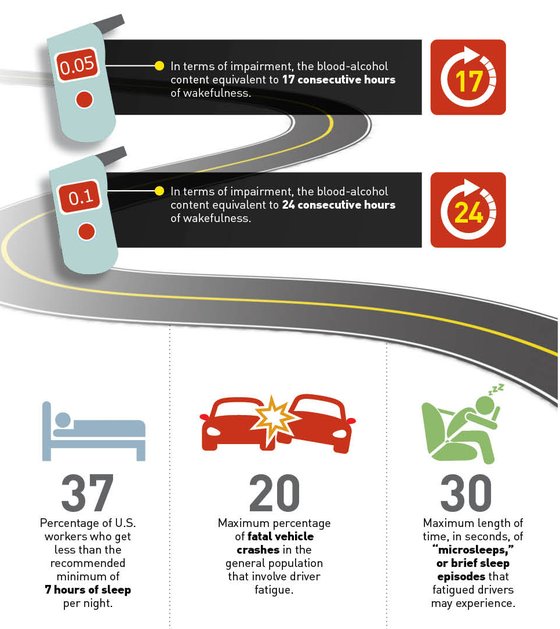DEPARTMENTS
BY THE NUMBERS
Driver Fatigue
From CDC’s web page on drowsy driving:
“Studies have shown that going too long without sleep can impair your ability to drive the same way as drinking too much alcohol. . . . Additionally, drowsiness increases the effect of even low amounts of alcohol.”

Tap on the graphic to open a larger version in your browser.
In August, The Knoxville News Sentinel reported that a student intern and a researcher at Oak Ridge Associated Universities had devised an experiment to replicate the McCluskey incident in order to study the effects of radiation on the body. By irradiating vials of their own blood for different lengths of time, the researchers hope to generate data that clinicians and first responders can refer to following an exposure incident.
Read more from the News Sentinel.

